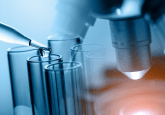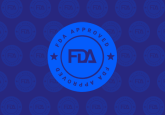4. Do you follow a one assay approach or two assay approach for your PK bioanalytical assays? What are the pros and cons?

Christina Satterwhite: “The one assay approach is followed for PK bioanalytical assays, however, the feasibility of this approach would need to be evaluated in method development prior to method validation. The similarity of the biosimilar and the originator should be evaluated and well documented in method development experiments. The data would then be used to demonstrate that either the biosimilar or the originator can be used for the standard curve and QC’s. The one assay approach is more cost effective, results in less inter-assay variation and streamlines comparability of the PK data. The one assay approach has now become the industry standard for biosimilars [1].”
[1] Marini JC, Anderson M, Cai, X-Y et al. Systematic verification of bioanalytical similarity between a biosimilar and a reference biotherapeutic: committee recommendations for the development and validation of a single ligand-binding assay to support pharmacokinetic assessments. AAPS J. 16(6), 1149–1158 (2014).
Jonathan St-Germain: “In a perfect world a bioanalytical PK study would be systematically conducted using two different platforms, namely mass spectrometry and ligand-binding assays. On one hand, these platforms could validate each other’s results and, in addition, combining their respective data could provide complimentary information that can be missed when using only one or the other. In reality, this approach greatly increases the cost of bioanalytical studies and in most cases is simply not feasible. Therefore, choosing between a mass spectrometry and ligand-binding assay will depend on the nature of the molecule and the information/resources available. If a sensitive ligand-binding assay is readily available to perform PK on a given molecule for which immunogenicity/antigenicity is of negligible concern, then it may not be worthwhile to invest in the method development of a mass spectrometry assay. Otherwise, mass spectrometry may offer great flexibility, specificity, wide dynamic range, multiplexing, robustness and accuracy, in addition to circumventing interferences from ADAs. The choice of platform is a certainly delicate step in the bioanalytical process and one that is highly context-dependent.”
Arno Kromminga: “One PK assay should be used which is calibrated with the biosimilar. QC should be generated with the biosimilar and the reference product(s).”





